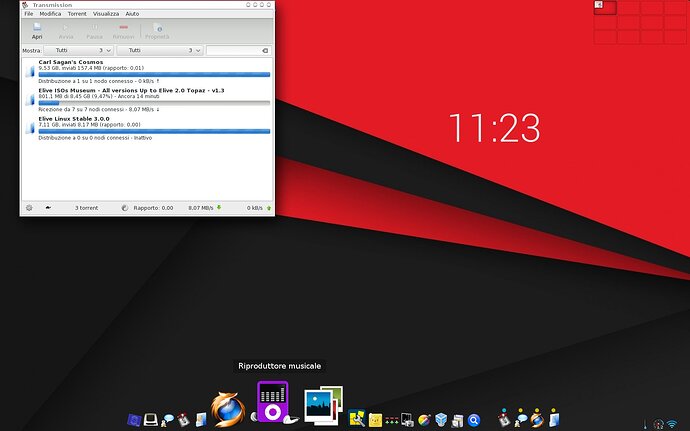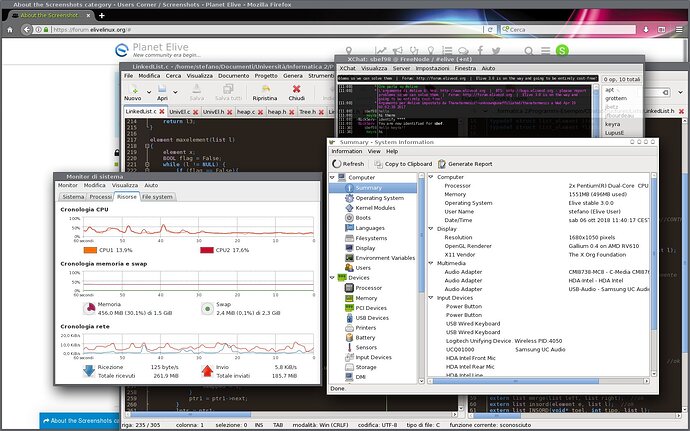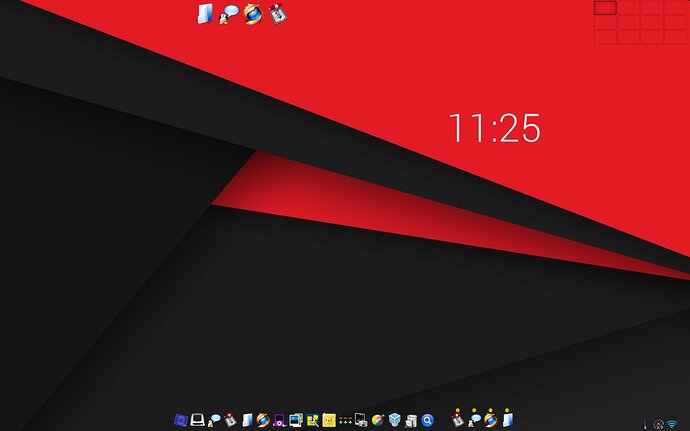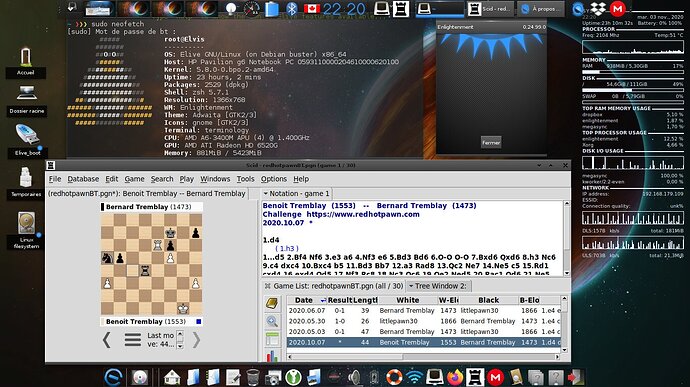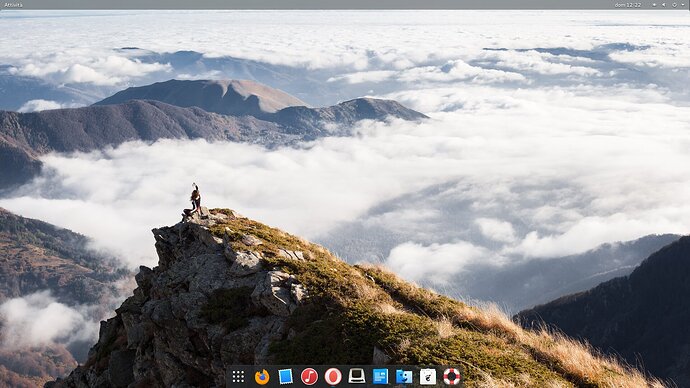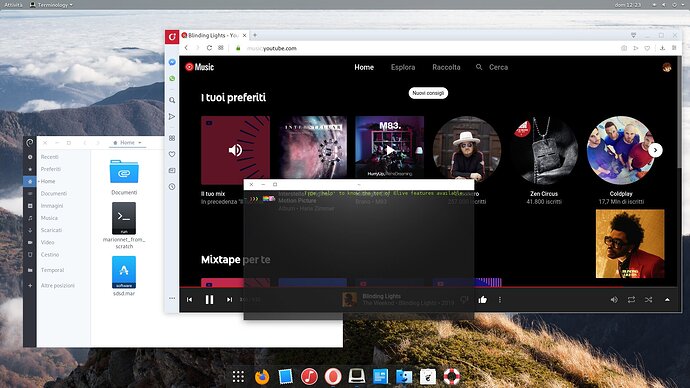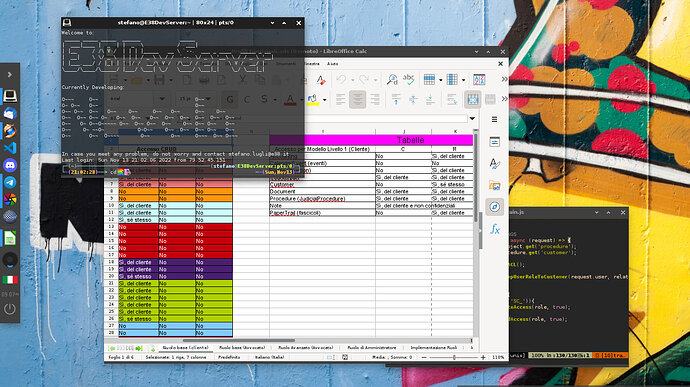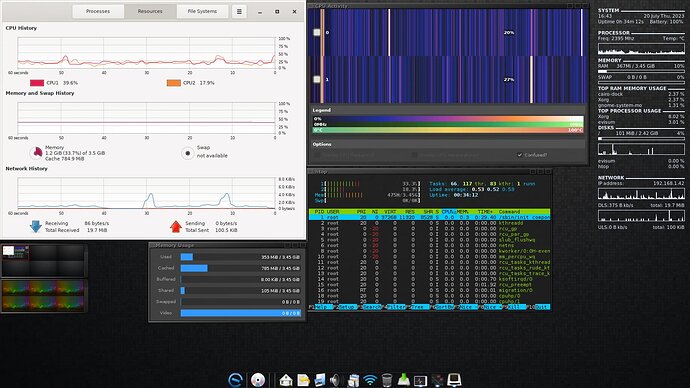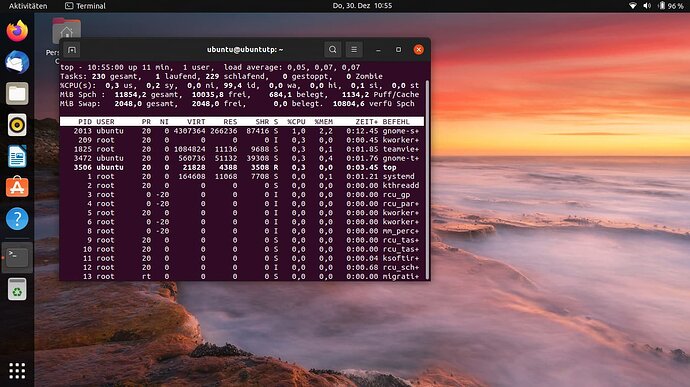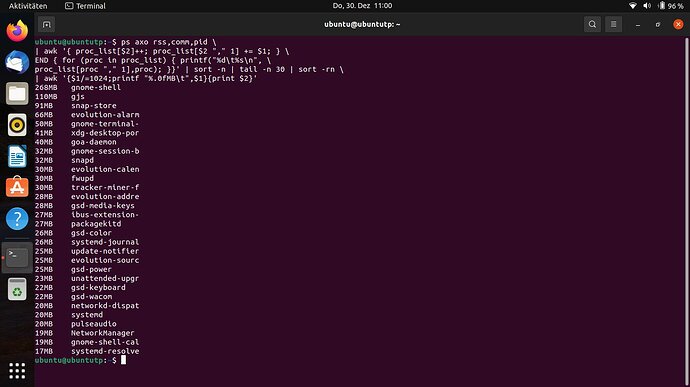OK this thread seems dead since a while.
But whatever, here is a screenshot of E24 running with the E shelf on top and cairo-dock at the bottom.
I have some instabilities with E24. From time to time it freeze. So I'm not using it as my main desktop for now.
Cheers,
BT
3 Likes
So sad to say, i installed gnome over Elive. It's for good reasons tho! Gotta use this desktop for a meeting in which i have it to look the simplest and coolest possible for a mac user. I know i know enlightenment can look pretty tidy an cool too, tho... well for someone completely unfamiliar with linux gnome will be pretty easier and tidier to use and look at.
Anyway i'm still using elive's CLI commodities ![]()
1 Like
Looks nice anyway, even though GNOME is... GNOME. ![]()
The desktop background really makes up for it ![]() . Nice choice
. Nice choice ![]()
1 Like
Nice desktop👍🏻
I don't understand why is it eating up so much ram tho.
seriously, i know gnome it's heavy, but when i first got into linux a few years ago (like 3?) i used to use gnome on my laptop, and it only had 4 gb of ram like this pc here rn.
Tho at the time the experience was smooth, now it easily starts swapping, swapping so much the friggin mouse stutters!
That RAM usage has been the case since the creation of "gnome-shell" and it's tight integration with systemd.
BTW,
Is that Gnome on Elive or on it's own Buster?
1 Like
On elive.
Elive on E16 can look almost as tidy and nice, tho has some more annoying downsides that my father would not like having to do with. For example, cairo dock hiding behind the windows and not coming up automatically when u put the mouse over it (you should set it "stay on top" at each boot)
that should be doable using the .conf scripts, I thought. ![]()
Otherwise in .bashrc or a keyboard shortcut with i.e the Win-key?
But otherwise try one of the other available docks. I 'm quite happy with "tint2" but I doubt your father would be.
Or maybe just install the Gnome dock on top of E16 ..... or configure E24 to be like E16.
1 Like
I did a short survey of the other docks and actually found "plank" to be the only solution (next to tint2 and cairo-dock) on E16.
Of those 3 docks, only tint2 can appear (when autohidden) above the running window when "edged". Both others do offer the option in their "preferences" but don't deliver when set that way.![]()
Considering that the other 2 docks are gnome based, I'm distrustfully eyeing "gdbus" as the culprit. ![]()
On a side note: All 3rd party docks have strange behaviour (with default settings) on E24.
I'll look into that on another occasion. ![]()
1 Like
I'm surprise i didn't see this post earlier... this is a great news! I din't know about tint2 but if that works properly finally i can switch to e16 (which i love compared to e24)!
This is what my tint2 looks like.

The nice thing about it is that it doesn't invisibly hijack a whole section of the desktop, like 'plank' and 'cairio-dock' do.
For me, the only issue I find with E16 is that it doesn't behave nicely when, intermittently connecting an external monitor..... it mucks up the 'remembered' settings of some widgets.
2 Likes
Quite beautiful.
Luckily i do not often time suse external monitors!
I actually do enjoy working on enlightenment a lot. It always feels snappy, and the Elive utilities for terminal are simply great.
I must say that lately i've been trying Opensuse Tumbleweed and i am enjoying it quite much. Tho, still, working on Elive it's just something else.
Does it still have KDE/plasma as it's default desktop or have they moved over to Gnome too?
I always found Suse to be a tad stiff to customize .... but they always had great hardware support.
Here's my latest iteration using BeautyLine icons:

Oh well, admittedly I still use my own icon for the app launcher. ![]()
2 Likes
And on my home desktop monitor that looks awesome with a black wallpaper and RetroWave settings.....like a black slab with neon lights.

Using 'tint2' and 'pager' top of the screen and 'plank' at the bottom.
That RAM usage isn't really an issue of "gnome-shell" nor is it related to systemd. Frankly, the issue is mainly with people who measure and compare but who don't really know what and how they measure or what and how to compare.
Most people will simply open the Gnome resources tool, read the numbers, and conclude that Gnome is heavy, but what would you say if I told you that some other noob might very well conclude that Elive is heavier than Gnome?
Please look at this screenshot.
How much RAM is Elive using? 353, 367, 475 MB, or 1.2 GiB?
Does Porteus with Gnome use 480 or 932 MB?
According to the Gnome tool, Gnome is lighter than Enlightenment.
However, the first thing is that the Gnome tool always shows much higher RAM usage because it includes cache, and the second thing is that Gnome has a few features missing in other WMs—someone who doesn't think of them may quickly end up comparing oranges and apples.
Here, Ubuntu Gnome is using 684 MB of RAM, gnome-shell 268, and systemd 20 MB.
The main culprits are always packagekitd and gnome-software, and, to a somewhat lesser degree, xdg-desktop-portal and gjs. and occasionally, system search and file indexing too.
It's actually pretty easy to tame Gnome RAM usage by simply disabling the main culprits, but that is exactly why one would want to use Gnome rather than some primitive WMs.
Packagekit and gnome-software take care of automatic updates and system upgrades; new releases included; Gjs is needed for notifications; and xdg-desktop-portal is there because of Flatpak. System search and indexing (tracker-miner-fs and -store) are usually not full-time RAM consumers but run occasionally, like upon a fresh install or after big changes, and they are extremely convenient and the last thing anybody would consider shutting down.
This system search does more than merely search. It can launch the applications or offer to install them if you type in the name of an application that is not installed; it can do simple mathematical calculations, start a web search, etc.
All in all, the more sophisticated OS simply needs more resources than the less sophisticated ones.
1 Like
I've never liked comparing RAM usage of distros. The kernel does a lot of caching, but it obviously won't if the system is low on memory.
That 1.2GB figure is, I believe, including the kernel cache - 367MB/353MiB is the true usage. The kernel cache will shrink when the machine starts getting low on available memory.
GNOME appears to have the same behaviour - the kernel is doing about 455MiB of caching, which inflates the memory usage. In reality, it's probably using the 480MiB figure - the rest is almost certainly cache.
I usually use free -h for showing memory usage, because it's consistent in how it shows it.
Here's the output of free -h of my Arch box as of now while it's got a ton of stuff open (I always have a stupid amount of browser tabs):
total used free shared buff/cache available
Mem: 15Gi 8.8Gi 616Mi 204Mi 6.6Gi 6.7Gi
Swap: 4.0Gi 1.5Mi 4.0Gi
You'll notice that only 616MiB are reported as 'free', but 6.7GiB are reported as 'available'.The kernel is using 6.6GiB as cache. (I'm not sure what the remaining dissonance between free and available is from, but you get the idea.) The useful figures are almost always used and available. Only use the free column if you specifically need it - the kernel is smart enough to free up its own memory when the system needs it.
